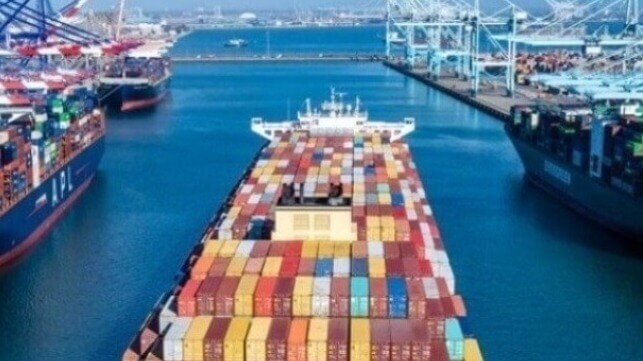Volumes and Freight Costs Surge as Retailers Accelerate U.S. Imports

Retailers are rushing to get inventories into the United States reports the National Retail Federation in part due to the fears of a U.S. East Coast dockworkers strike and to guard against the ongoing disruptions due to the diversions away from the Red Sea. The result is that volumes spiked in June contributing to the strong jump in freight rates with the NRF raising its forecast for imports in the third quarter before falling and flattening out in the fourth quarter.
“Retailers are concerned by the possibility of a strike at ports on the East and Gulf coasts because contract talks have stalled,” said Jonathan Gold, NRF Vice President for Supply Chain and Customs Policy. “Many retailers have taken precautions including earlier shipping and shifting cargo to West Coast ports.”
The group revised upwards its figure for June saying it believes retailers imported a total of 2.16 million TEU coming through the major U.S. seaports. Well-known industry analyst Peter Sand, Chief Analyst at Xeneta agrees noting that while the trade from China to North America did not set a new all-time high, it was still the highest volume of containers to have ever been shipped in the month of June. Xeneta calculates a total of 1.36 million TEU were imported specifically from Cina into the U.S.
The NRF is projecting that the accelerated shipments will continue with the trade group raising its forecast nearly six percent for both July and August and up three percent for September. The retailers are forecasting a total of 6.84 million TEU in the third quarter up nearly five percent over their forecast in early July.
Vessel diversions have led to increased shipping times and costs and have led to equipment shortages and congestion in Asian ports, says Gold. He also believes that rising freight rates also prompted importers to ship earlier.
“Shippers wanted to protect supply chains and that has come with a heavy price tag,” comments Sand. He says, “The massive volumes shipped in May and June contributed to the severe congestion seen at ports in Asia and the dramatic spike in rates.” The record volumes seen in May and June he also believes underlines major fronthaul trades out of China ahead of the traditional peak season in Q3.
“Importers are continuing to grow their inventories and are shifting cargo to the West Coast as a precaution against potential labor disruptions,” comments Ben Hackett, Founder of Hackett Associates. “We calculate that the shift has pushed the West Coast share of cargo we track to above 50 percent for the first time in over three years.”
The NRF believes though that this is an acceleration, a fear that Maersk also echoed reporting its quarterly results. The industry is concerned if the volumes would be maintained with the NRF now lowering its forecast for October imports by more than 16 percent.
Despite the apparent fronthaul this year, the expectation is that volumes will still show small gains during the fourth quarter. For the full year, the retailers are forecasting an annual total of 24.95 million TEU which will be up nearly 12 percent over last year and third only to the total seen during the surge years of 2021 and 2022.
The import numbers come as NRF is forecasting that 2024 retail sales – excluding automobile dealers, gasoline stations, and restaurants to focus on core retail – will grow between 2.5 and 3.5 percent over 2023.
Like many in the importing and manufacturing sectors, the National Retail Federation is urging the International Longshoremen’s Association and the United States Maritime Alliance to return to the table to continue negotiations ahead of the September 30 expiration of the contract for dockworkers at ports ranging from Maine to the U.S. Gulf Coast.
